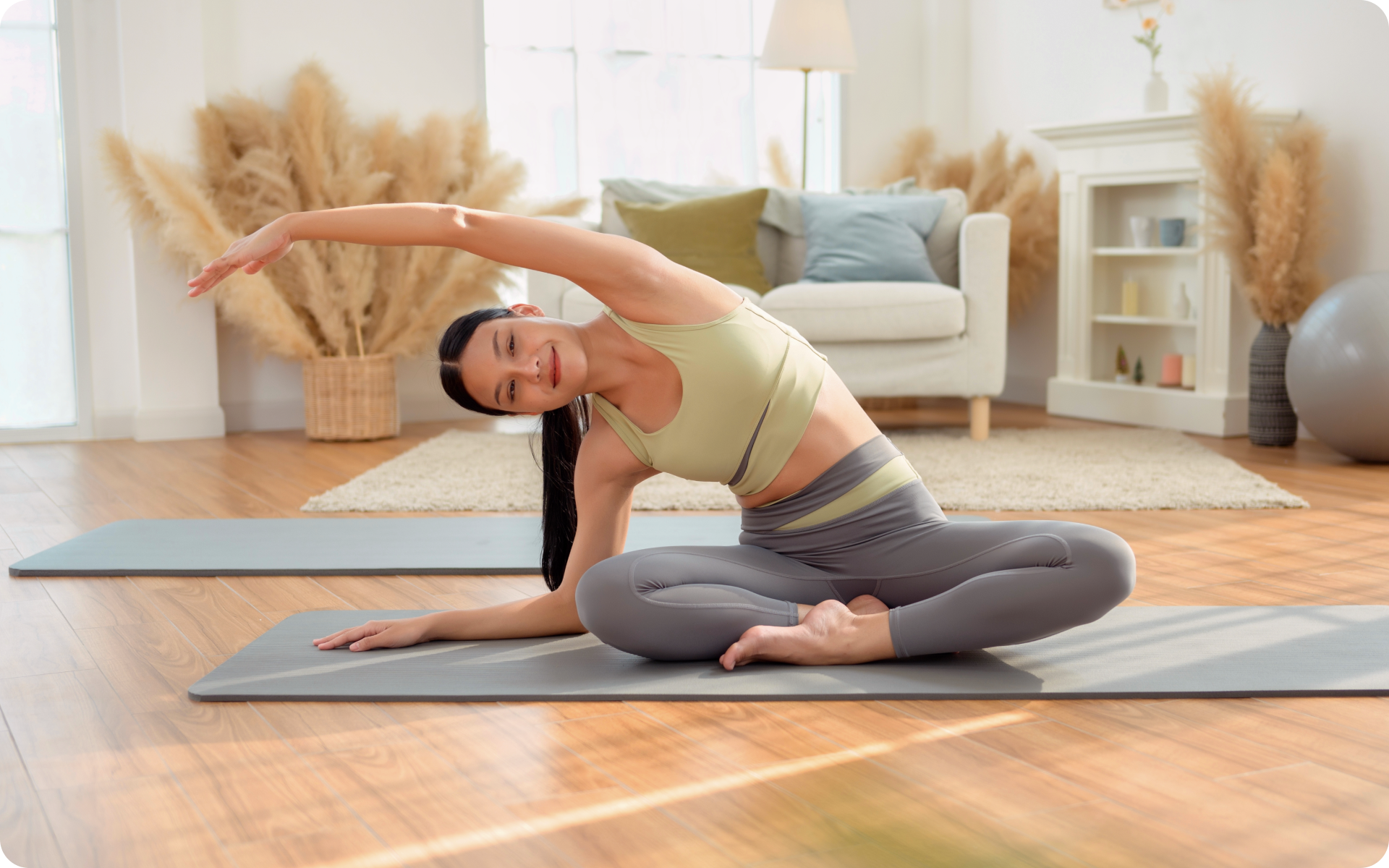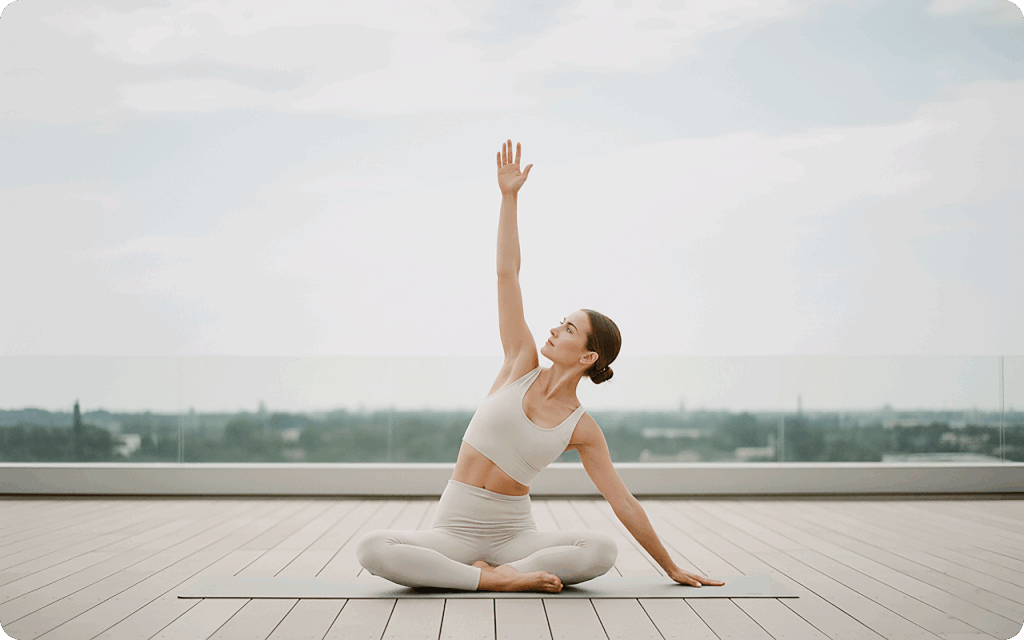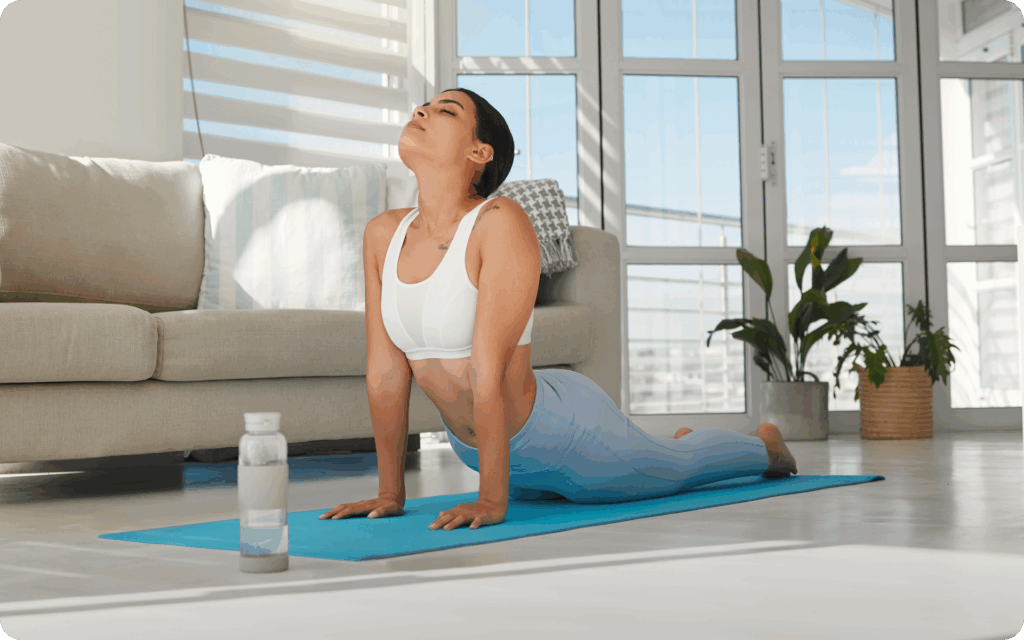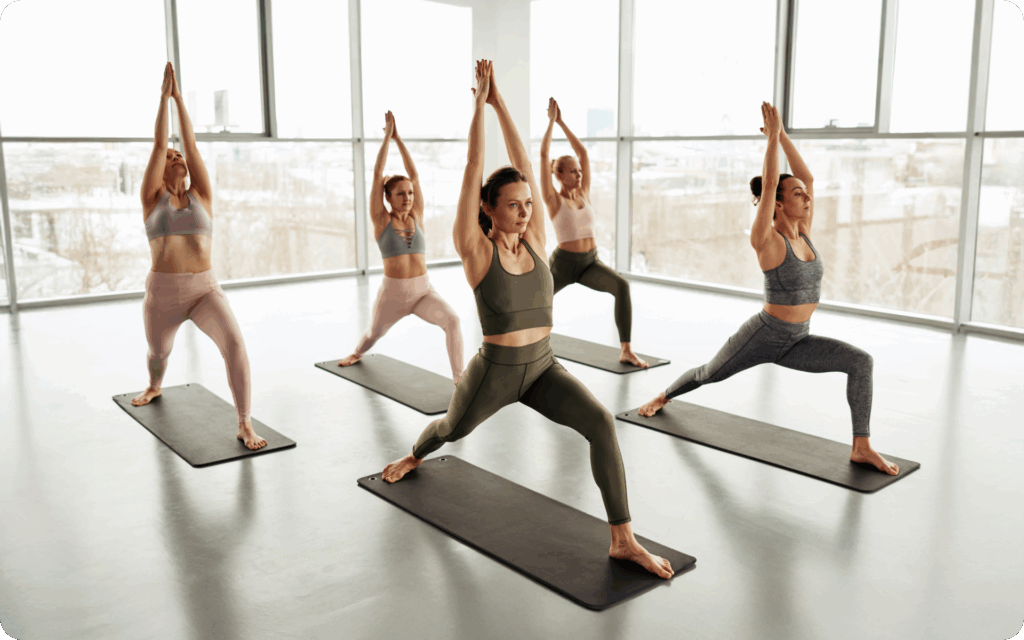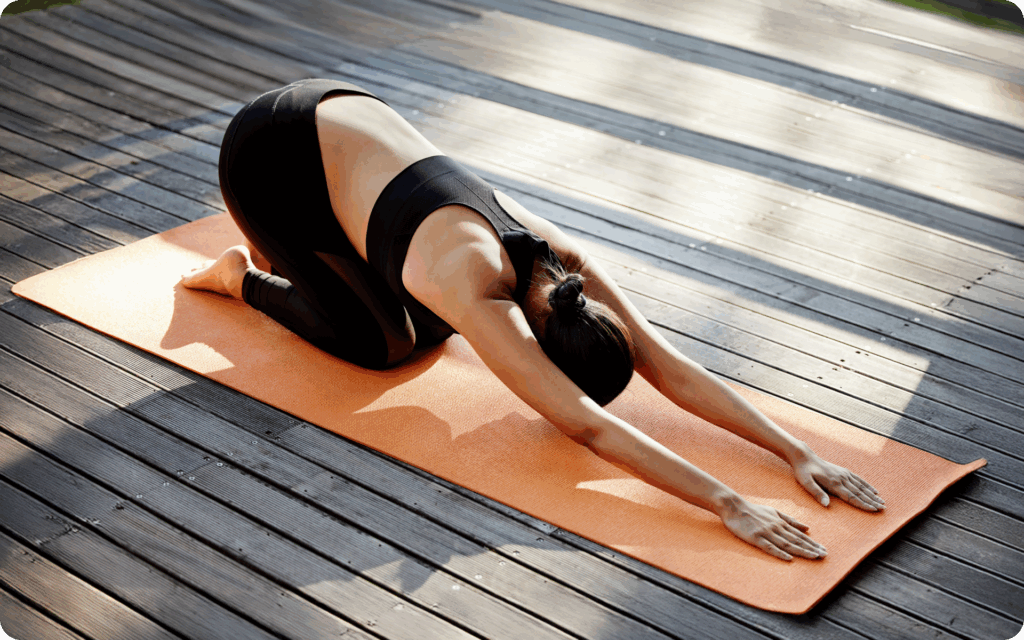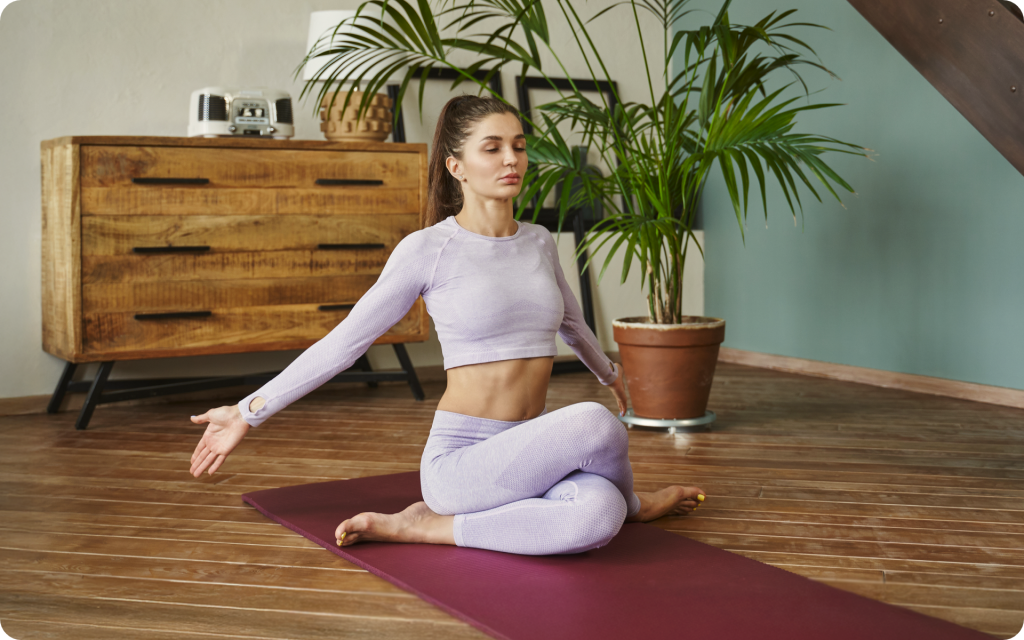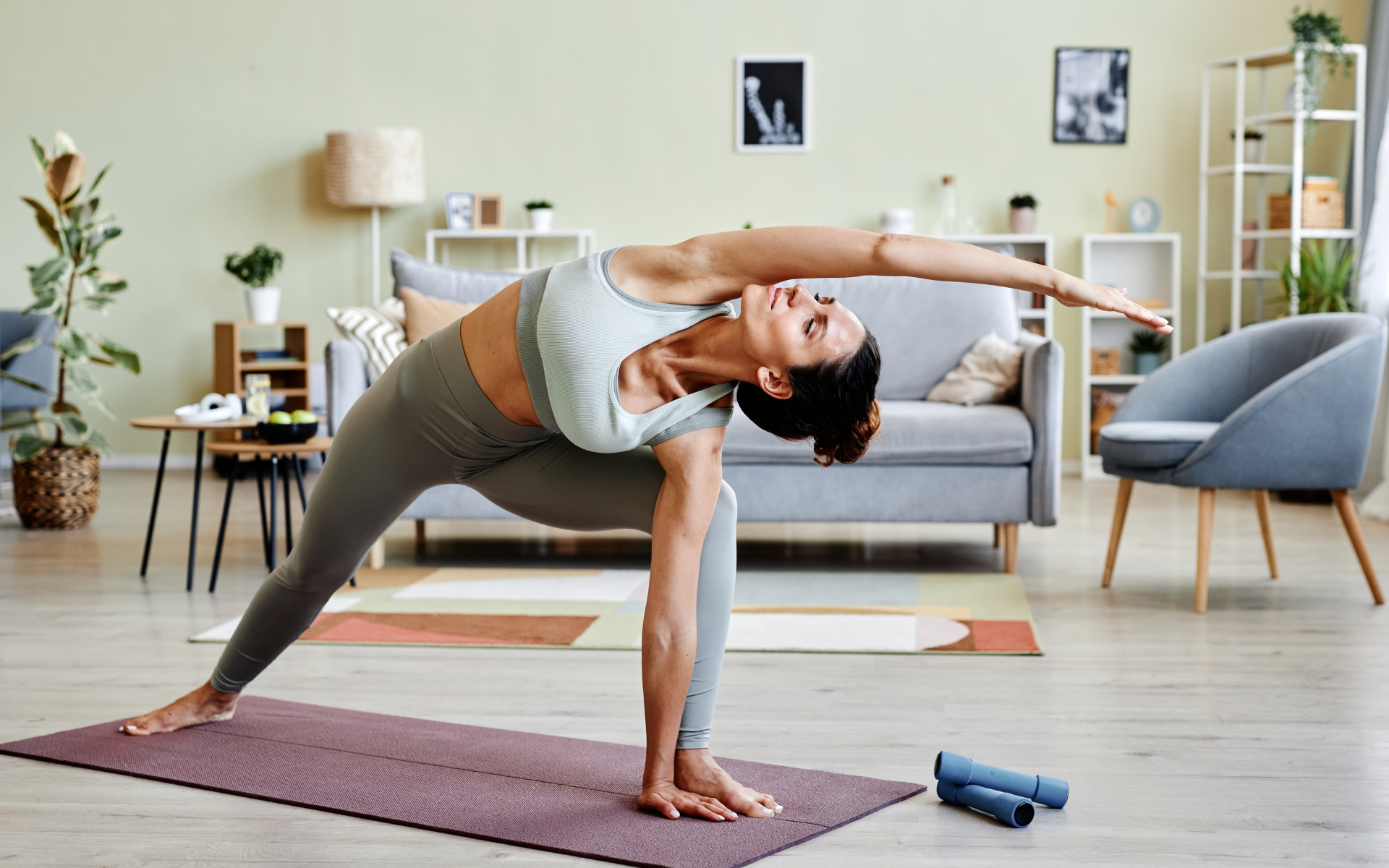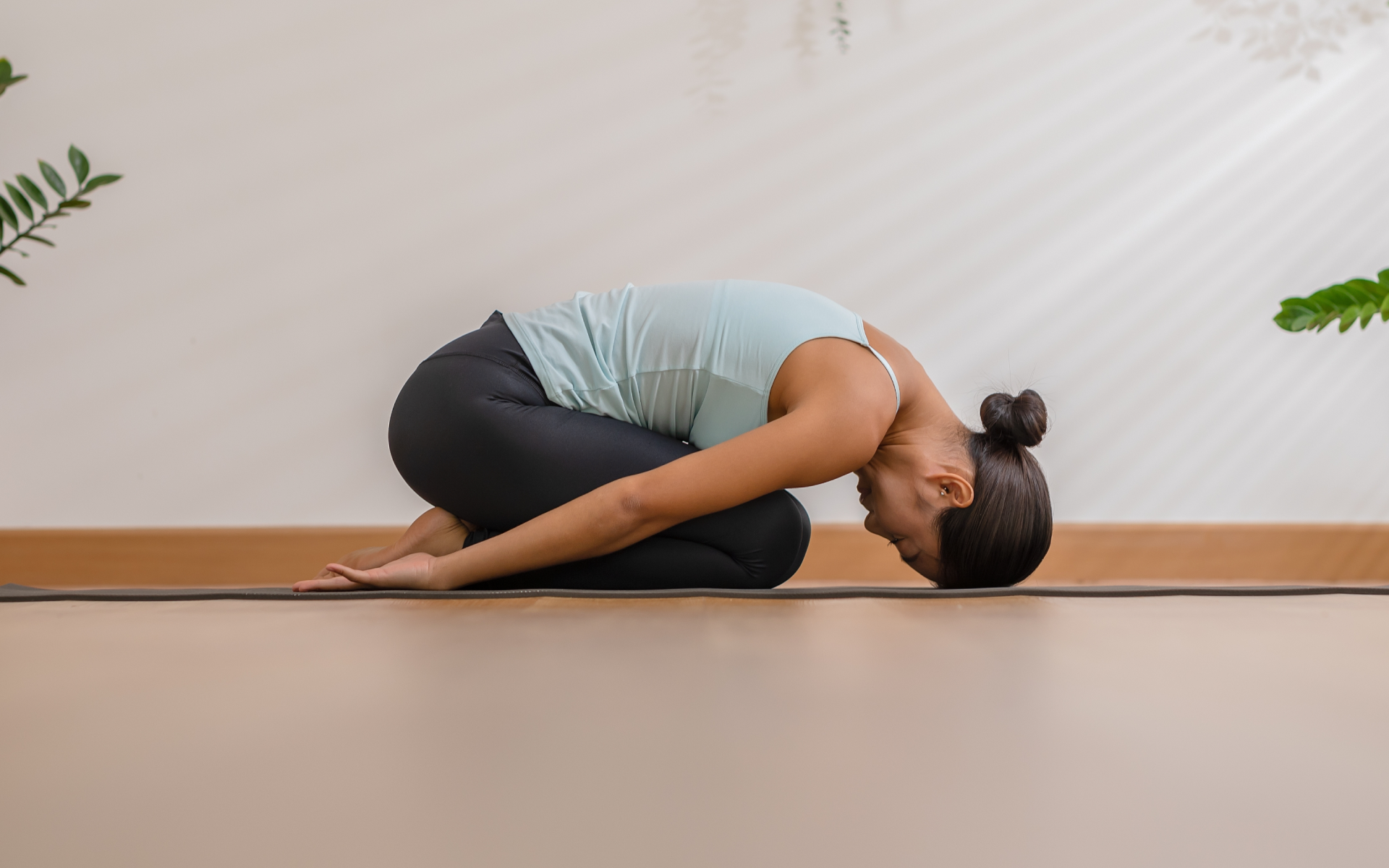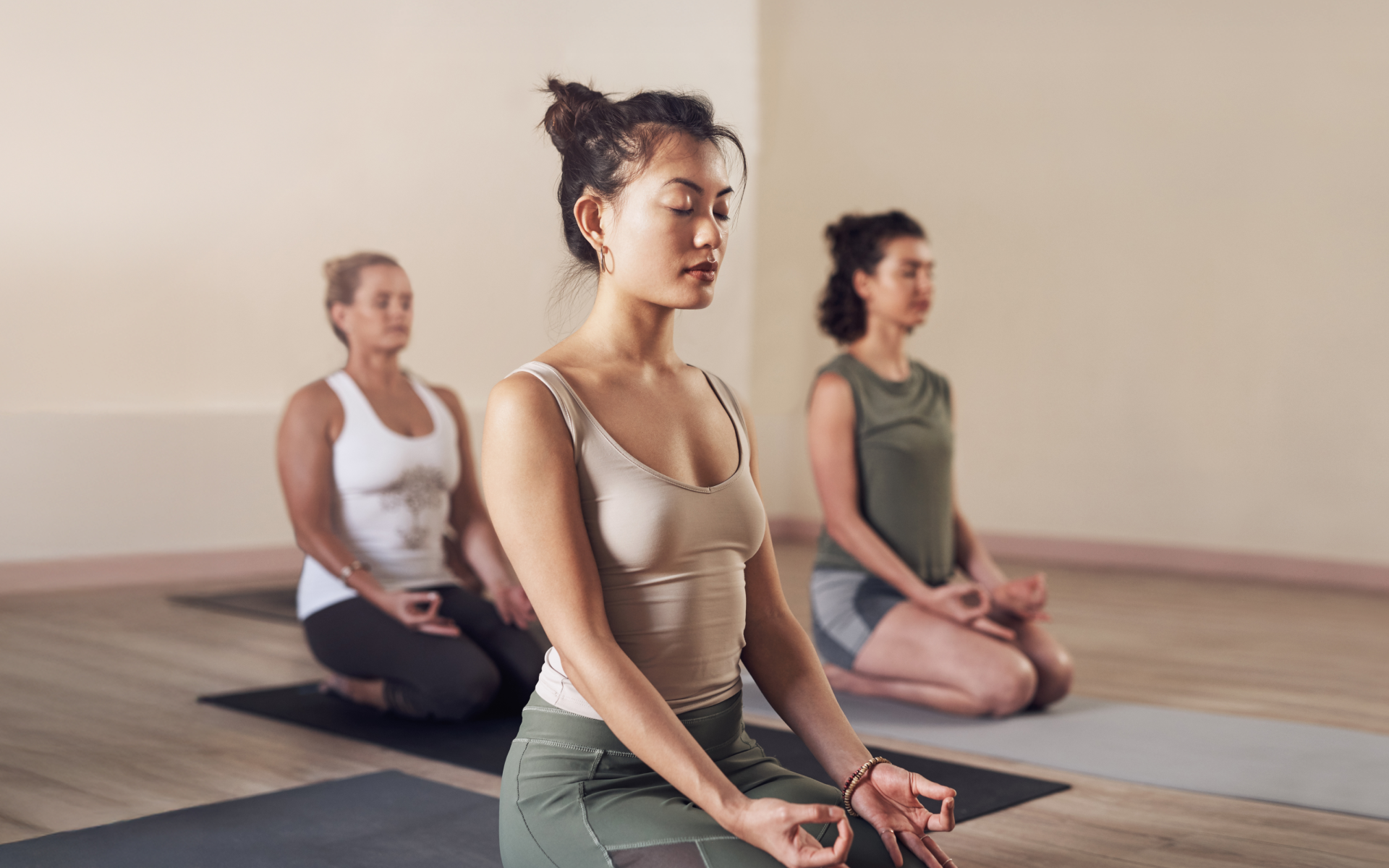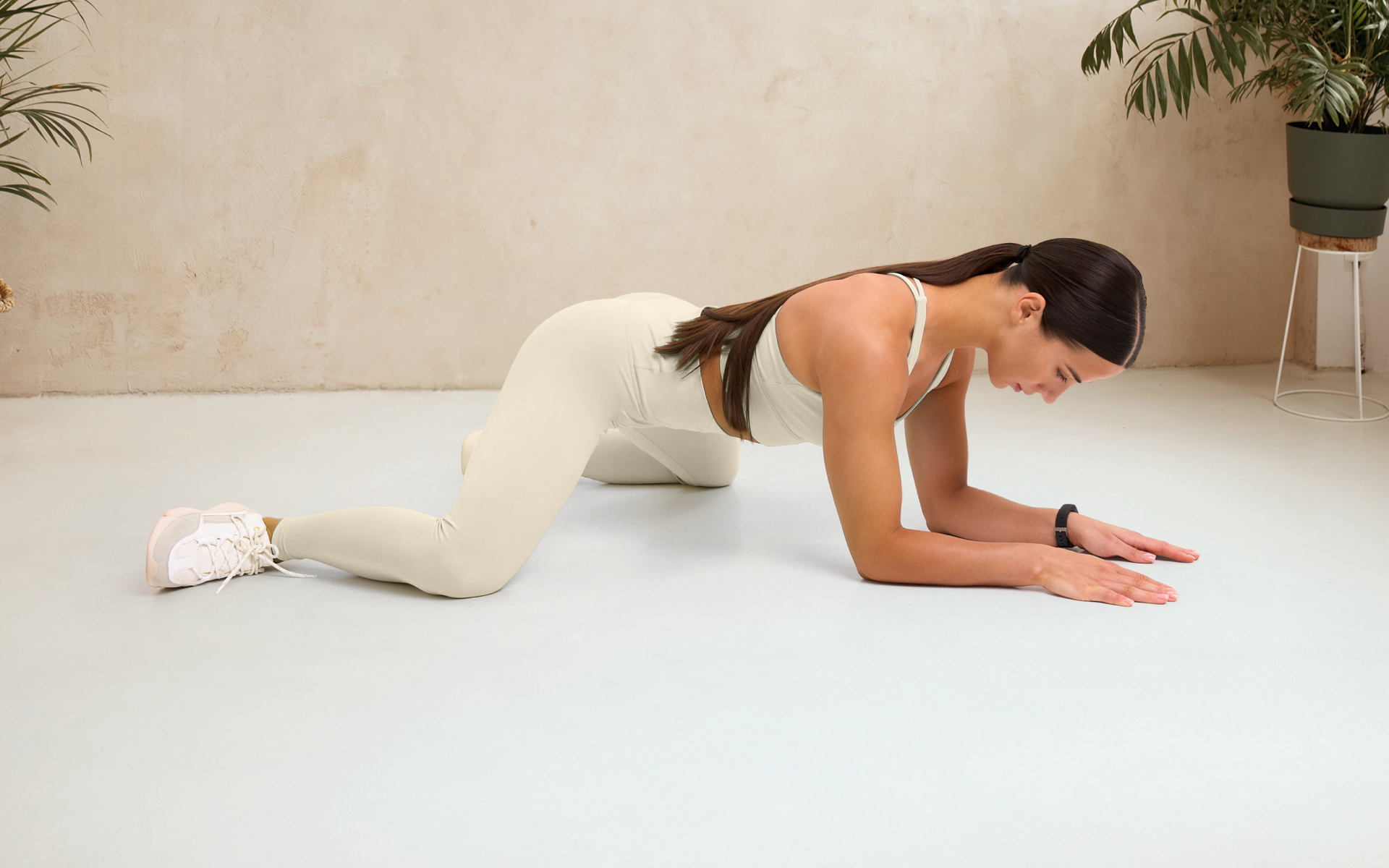Somatic activities are quickly gaining popularity in Western cultures, as people seek more practical ways to alleviate stress and reconnect with their bodies (1).
Rooted in mind-body principles, somatic activities use movement, breath, and mindful awareness to release stored tension and restore balance to your mind and body (2).
Whether you’re struggling with concentration, daily stress, chronic muscle tightness, or unresolved emotions, somatic activities may offer tools to support your well-being that easily fit into your everyday routine.
This article will break down what somatic activities are, who can benefit from them, the most common somatic practices, and practical tips to help you get started.
What Is The Meaning Of Somatic Activity?
Somatic activities are practices that connect the body and mind through movement, breath, and mindful awareness (2). By focusing on how your body feels and moves, these practices can help release stored tension, reduce stress, improve emotional regulation, and enhance overall well-being (2, 3, 4).
Specifically, somatic activities use these 3 different types of awareness (5):
- Interoceptive: Noticing internal bodily sensations, such as heart rate, breathing patterns, or muscle tension.
- Exteroceptive: Noticing external stimuli, such as touch, temperature, pressure, or sounds in your environment.
- Proprioceptive: Understanding your body’s position in space and how it moves.
The goal of somatic activities isn’t to achieve specific fitness goals, but rather to bring present-moment awareness to your body. Over time, this can help you better identify areas of stress and tension while supporting a greater sense of calm and balance (6).
If you have pre-existing medical conditions or mental health concerns, always consult a doctor or mental health professional before starting any new somatic activities to make sure it’s safe and appropriate for your needs and current situation.
Read more: 6 Somatic Yoga Exercises for Beginners
Who Can Benefit From Somatic Activities?
Somatic activities are versatile practices that can fit into many lifestyles and offer benefits, even for those who don’t consider themselves particularly stressed.
By promoting body awareness and supporting whole-body relaxation, they can be valuable tools for anyone looking to enhance overall well-being (2).
That said, some common groups that may especially benefit include:
- Students: Somatic activities for students can enhance cognitive functions, such as concentration, memory, and focus, while also relieving stress (7).
- Professionals: Somatic practices offer practical ways to manage stress during busy workdays and create opportunities for relaxation (8).
- Individuals with chronic pain: Somatic activities can help alleviate persistent muscle tension or tightness associated with pain, while promoting physical relaxation (3).
- Those seeking mindfulness: Somatic activities can help increase awareness of the body and promote staying present in the current moment (2, 6).
- Those with past trauma: Somatic exercises to release trauma may be helpful for those with trauma histories. However, these trauma-releasing exercises should occur under the guidance of a qualified, trauma-informed practitioner (9).
Even if you don’t fit into one of these categories, it’s still always a good idea to check in with your doctor or a mental health professional. They can help make sure the practices you choose are safe, appropriate, and aligned with your health needs and goals.
BetterMe: Health Coaching app helps you achieve your body goals with ease and efficiency by helping to choose proper meal plans and effective workouts. Start using our app and you will see good results in a short time.
Examples Of Somatic Activities
Now you may be wondering, what is an example of a somatic activity?
The answer is that somatic activities examples will be any practice that brings mindful attention to your body, supporting the mind-body connection (2).
Below are some common somatic activity examples:
- Gentle Movement
Gentle movement plays a central role in most somatic activities, allowing you to move mindfully and at your own pace, thereby noticing subtle sensations or areas of tension (10).
It’s worth noting that nearly any movement can become somatic when done with intention and focused on internal awareness, rather than fitness or performance goals (11).
That said, standard somatic bodywork techniques include:
- Light stretching: Gentle stretches performed with full attention to how each body part and muscle group feels, rather than aiming for flexibility (12).
- Yoga: Somatic yoga uses mindful postures that practitioners can adapt to their comfort level, performed with attention to breath and internal sensations (13).
- Tai Chi/Qi Gong: Mind-body practices focused on slow, flowing movement to increase body awareness and promote mood regulation (14).
- Breathwork
Somatic breathwork practices use structured, intentional breathing to calm the nervous system and bring your attention to the present moment (15).
They’re beneficial for regulating stress in real time, making them an effective tool for whenever you need a quick break or a mental reset.
Common somatic breathing exercises include:
- Diaphragmatic breathing: Involves breathing deeply through the diaphragm (rather than the chest) to promote a full exchange of oxygen (16).
- Box breathing: A structured breathing pattern where you inhale for 4 seconds, hold for 4 seconds, exhale for 4 seconds, and hold for 4 seconds (17).
- Cyclic sighing: Breathing technique that involves taking a deep inhale followed by a long, audible exhale, often repeated several times to promote calm and enhance mood (17).
- 4-7-8 breathing: Structured breathing pattern where you inhale for 4 counts, hold for 7 counts, then exhale for 8 counts (18).
- Grounding Exercises
Grounding exercises help anchor your awareness in the present moment by focusing on your physical sensations and your surroundings (19). These are another helpful tool for managing feelings of distress or overwhelm in the moment when you need to pause, recharge, or regain emotional balance.
What are the most grounding somatic activities?
Some common grounding exercises to consider trying include (20):
- Body scans: Gradually observing different parts of your body from head to toe, noticing sensations without judgment or trying to change anything (21).
- Guided imagery: Visualizing a calming, safe space in your mind to recenter yourself and regain a sense of emotional stability (22).
- Sensory engagement: Tuning into your surroundings using methods such as the 5-4-3-2-1 technique, where you identify 5 things you see, 4 things you touch, 3 things you hear, 2 things you smell, and 1 thing you taste (23).
- Somatic Therapy
Somatic therapy is a structured, clinical approach designed to help people work through deeper emotional challenges, such as trauma or complex mental health concerns (24).
Since it involves sensitive emotional and physical processes, it should always be done with a trauma-informed mental health professional to ensure safety and effectiveness.
To find a qualified provider near you, use a reputable mental health directory online or ask your primary care provider for a recommendation.
Below are Somatic activities for mental health and Somatic exercises to release trauma.
The 3 types of somatic therapy most commonly used for these purposes include:
- Somatic experiencing: Focuses on releasing trauma stored in the body through gentle body awareness and slow, guided movement (25).
- Sensorimotor psychotherapy: Blends talk therapy with body-based methods to help process trauma, build awareness, and improve emotional regulation (26).
- Hakomi method: A mindfulness-based, person-centered approach that uses gentle touch and invitational language to process emotional experiences (27).
Again, it’s essential to work with a licensed mental health professional when engaging in this kind of deeper therapeutic work to ensure your safety and personalized support.
Read more: Somatic Integration Therapy: Here’s What To Expect
Which Somatic Activities Work Best For Beginners?
The “best” somatic activities can vary widely from person to person.
Some individuals may feel most comfortable with slower, more meditative practices, while others prefer more movement-focused approaches such as yoga, tai chi, or gentle stretching.
When first starting, it’s helpful to try out different techniques to see which ones feel most natural and supportive for your body and mind.
Everyone’s needs are different, so it’s normal for certain somatic activities to resonate more with some individuals than with others.
If you’re looking for more somatic activities, the BetterMe app is a great resource to find guided techniques tailored to different needs, preferences, and goals.
Practical Tips For Getting Started With Somatic Activities
Incorporating somatic activities for mental and physical health into your routine doesn’t have to be complicated. With a few simple strategies, you can create a safe and enjoyable practice that supports your needs and overall well-being.
How Long Should Somatic Activity Sessions Last?
When first starting, it’s best to keep sessions short and manageable, allowing your body and mind time to adjust. As you become more comfortable, you can gradually lengthen your sessions to get even more out of your practice (28).
Additionally, note that the length of a session often depends on the type of activity you’re practicing. For instance, a simple breathing exercise may only take a few minutes, while a full-length somatic yoga session can last much longer and feel more intensive.
Your personal needs will also likely influence the somatic activity you choose.
- If you’re dealing with physical symptoms of anxiety (e.g., headaches, muscle tension), a longer movement-based practice such as yoga may be ideal.
- On the other hand, if your anxiety shows up as racing thoughts or rumination, a short mindfulness meditation may feel more effective.
The key is to find a routine that feels sustainable and supportive for your current needs and goals. Pay attention to what your body is telling you and use that as your guide.
Always consult your healthcare provider for further guidance or advice.
Reasons why BetterMe is a safe bet: a wide range of calorie-blasting workouts, finger-licking recipes, 24/7 support, challenges that’ll keep you on your best game, and that just scratches the surface! Start using our app and watch the magic happen.
Do I Need Any Equipment For Somatic Activities?
Most somatic activities require little to no special equipment, making them easy to start and accessible for just about anyone. All you need is some time set aside from your day and a comfortable space to practice.
That said, a few optional items may make your practice more comfortable and practical:
- Yoga mat: Provides a soft, cushioned surface for floor-based exercises
- Yoga block: Helps with stability and posture during specific movements
- Chair: Useful for seated exercises or for additional support when needed
- Cushion or pillow: Can add extra comfort and support to your session
- Eye mask: Can help block out distractions during meditative exercises
How To Prepare For Your First Session
Creating the right environment is also crucial for maximizing the benefits of your practice.
Here are some tips to prepare for your first somatic session:
- Wear comfortable, loose-fitting clothing.
- Choose a distraction-free space.
- Have water nearby to stay hydrated
- Close windows or blinds to limit distractions
- Cover mirrors to help shift the focus to internal awareness
- Consider dimming the lights for a more soothing atmosphere.
- Set an intention or focus before your session to guide the practice.
Somatic activities tap into the mind-body connection, helping you become more aware of your body and your present-moment experience (2). This heightened awareness can make it easier to notice and regulate emotional and physical responses to stress, which ultimately supports a calmer state of mind (29). Somatic activities encourage full attention to your body and surroundings, supporting present-moment awareness and building mindfulness skills (2). By focusing on your breath and internal sensations during movement, you can reconnect with your mind and body, staying grounded in the present moment. Yes, specific somatic exercises can target areas of chronic tension, helping you build greater awareness and release areas of tightness (3). Over time, this can lead to better alignment, improved posture, and even greater spinal mobility, especially in older adult populations (30, 31). A somatic effect often refers to a physical response in your body triggered by external or internal stressors, which can include muscle tension, changes in breathing, changes in heart rate, or other bodily sensations (32).Frequently Asked Questions
How do somatic activities reduce stress?
Why are somatic activities effective for mindfulness?
Can somatic activities improve posture?
What does somatic effect mean?
The Bottom Line
Somatic activities are a simple yet effective way to reconnect with your body, offering valuable coping skills that many people can benefit from.
They’re handy for regulating emotions on days when you need a pause or quick reset, making them ideal for students, working professionals, parents, or anyone dealing with daily stress.
For more resources to support your well-being, check out the BetterMe app.
DISCLAIMER:
This article is intended for general informational purposes only and does not serve to address individual circumstances. It is not a substitute for professional advice or help and should not be relied on for making any kind of decision-making. Any action taken as a direct or indirect result of the information in this article is entirely at your own risk and is your sole responsibility.
BetterMe, its content staff, and its medical advisors accept no responsibility for inaccuracies, errors, misstatements, inconsistencies, or omissions and specifically disclaim any liability, loss or risk, personal, professional or otherwise, which may be incurred as a consequence, directly or indirectly, of the use and/or application of any content.
You should always seek the advice of your physician or other qualified health provider with any questions you may have regarding a medical condition or your specific situation. Never disregard professional medical advice or delay seeking it because of BetterMe content. If you suspect or think you may have a medical emergency, call your doctor.
SOURCES:
- A New Era for Mind–Body Medicine (2021, nih.gov)
- The Body Can Balance the Score: Using a Somatic Self-Care Intervention to Support Well-Being and Promote Healing (2025, mdpi.com)
- Moving With Pain: What Principles From Somatic Practices Can Offer to People Living With Chronic Pain (2021, nih.gov)
- Facilitating Adaptive Emotion Processing and Somatic Reappraisal via Sustained Mindful Interoceptive Attention (2021, nih.gov)
- An Overview of the Bodily Awareness Representation and Interoception: Insights and Progress in the Field of Neurorehabilitation Research (2024, nih.gov)
- Mindfulness and Behavior Change (2020, nih.gov)
- Mindfulness-based school interventions: A systematic review of outcome evidence quality by study design (2022, nih.gov)
- Mindfulness Training Reduces Stress At Work: A Randomized Controlled Trial (2020, nih.gov)
- Somatic experiencing: using interoception and proprioception as core elements of trauma therapy (2015, frontiersin.org)
- Somatic Education: Gentle Exercises for Easier Movement (2009, tandfonline.com)
- The Definition of “Somatic,” The History of Somatic Education, and Principles of Clinical Somatic Education (2019, somaticmovementcenter.com)
- Biomechanical, Healing and Therapeutic Effects of Stretching: A Comprehensive Review (2023, mdpi.com)
- Impact of Somatic Yoga and Meditation on Fall Risk, Function, and Quality of Life for Chemotherapy-Induced Peripheral Neuropathy Syndrome in Cancer Survivors (2019, nih.gov)
- Qigong and Tai-Chi for Mood Regulation (2018, nih.gov)
- Breathing Practices for Stress and Anxiety Reduction: Conceptual Framework of Implementation Guidelines Based on a Systematic Review of the Published Literature (2023, nih.gov)
- Effects of Diaphragmatic Breathing on Health: A Narrative Review (2020, nih.gov)
- Brief structured respiration practices enhance mood and reduce physiological arousal (2023, nih.gov)
- The Effect of Deep Breathing Exercise and 4-7-8 Breathing Techniques Applied to Patients After Bariatric Surgery on Anxiety and Quality of Life (2023, nih.gov)
- Grounding the Connection Between Psyche and Soma: Creating a Reliable Observation Tool for Grounding Assessment in an Adult Population (2021, nih.gov)
- Exhibit 1.4-1: Grounding Techniques (2014, nih.gov)
- A randomised comparison of two ‘Stress Control’ programmes: Progressive Muscle Relaxation versus Mindfulness Body Scan (2019, sciencedirect.com)
- Investigating the Impact of Guided Imagery on Stress, Brain Functions, and Attention: A Randomized Trial (2023, mdpi.com)
- Combat Against Stress Anxiety and Panic Attacks 5-4-3-2-1 Coping Technique (2020, scitechnol.com)
- What is somatic therapy? (2023, health.harvard.edu)
- Somatic experiencing – effectiveness and key factors of a body-oriented trauma therapy: a scoping literature review (2021, nih.gov)
- Sensorimotor approaches to trauma treatment (2018, cambridge.org)
- The Hakomi Method: Defining Its Place Within the Humanistic Psychology Tradition (2011, journals.sagepub.com)
- Developing Your Daily Practice of Clinical Somatics Exercises (2023, somaticmovementcenter.com)
- Strong Mind, Strong Body: The Promise of Mind-Body Interventions to Address Growing Mental Health Needs Among Youth (2024, nih.gov)
- Somatic movement intervention among older adults to improve body awareness and spine mobility: A pilot study (2025, sciencedirect.com)
- Posture Exercise (2023, somaticmovementcenter.com)
- Physiology, Stress Reaction (2024, nih.gov)
